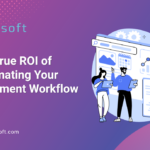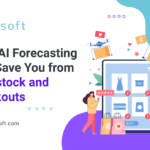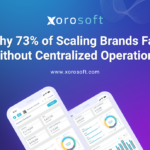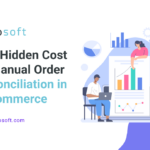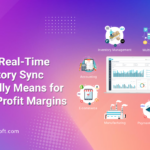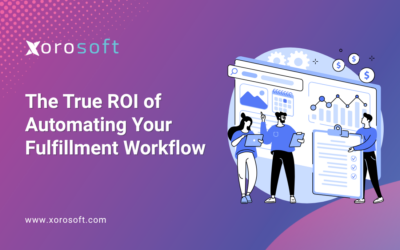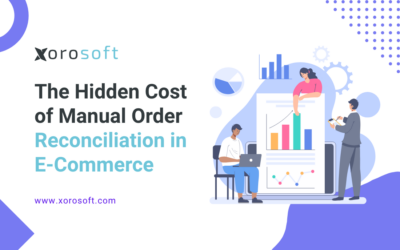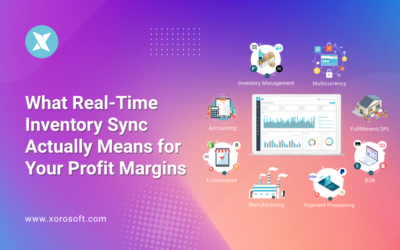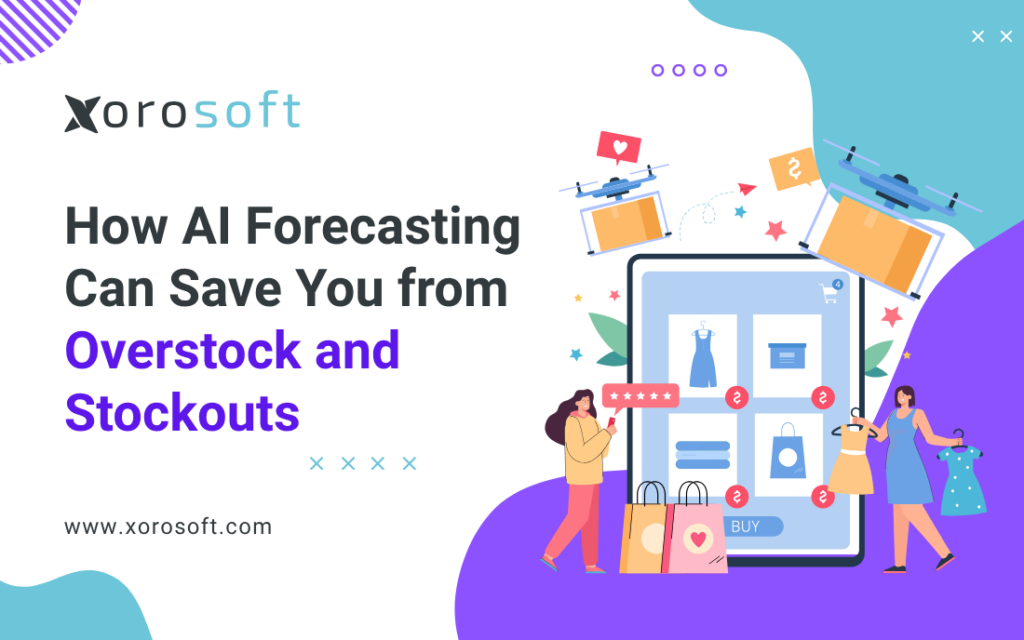
The New Advantage: AI Demand Forecasting for Ecommerce
Running an ecommerce brand shouldn’t feel like constant triage. Yet many founders face daily chaos from overstock and sudden sellouts. AI demand forecasting for ecommerce changes that. It uses data from your store, campaigns, and suppliers to predict demand with accuracy, helping you stay in stock without over-ordering. Instead of reacting to problems, you finally plan with confidence and focus on growth.
Why DTC and Omnichannel Brands Need AI Demand Forecasting for Ecommerce
Most ecommerce operators already have data — lots of it. What’s missing is a way to connect it all into meaningful, real-time insights. Orders live in Shopify, returns sit in a 3PL portal, and promotions exist in a marketing calendar somewhere else. Even with all those tools, you still end up guessing.
When your systems don’t talk to each other, it’s easy to rely on gut instinct. However, that approach becomes riskier as your business scales. A single misjudged reorder can lock away thousands in inventory or cost you a key sale. This is exactly where AI demand forecasting for ecommerce changes the game.
Instead of “more data,” you get better context. The AI models behind modern ecommerce ERPs analyze order history, seasonality, marketing campaigns, and supplier lead times. As a result, they can detect trends and triggers that humans might overlook — like a micro-influencer’s video quietly spiking next month’s demand.
Therefore, you move from constantly reacting to proactively shaping your inventory strategy.
How AI Demand Forecasting Helps Founders Focus on Growth
Every founder dreams of spending more time building products, improving marketing, and nurturing the brand community. Yet most are stuck managing stock issues that never seem to end. The desire is simple: predict demand accurately, fulfill confidently, and reclaim time for growth.
Unfortunately, several invisible frictions block that goal:
-
Forecasting is often reactive rather than predictive.
-
Reordering decisions depend on gut feeling.
-
Data lives across too many platforms.
-
Growth amplifies chaos instead of creating stability.
-
Cash is trapped in inventory that moves too slowly.
Although these challenges feel inevitable, they aren’t. With the right forecasting approach, operations become predictable, cash flow steadier, and your time freer.
A Real Brand Example: From Inventory Chaos to Calm
A mid-sized DTC skincare brand recently faced this exact problem. Its founders managed everything in Google Sheets — tracking orders, estimating next month’s demand, and juggling supplier delays. Nearly a third of their SKUs were either out-of-stock or overstocked at any given time.
After implementing AI demand forecasting for ecommerce through an integrated ERP system, everything changed within two months. Stockouts dropped by 45%, and excess inventory fell by 40%. Reorder accuracy improved by more than a third, while the team gained back nearly twenty hours per week to focus on marketing partnerships.
Although the system didn’t replace their team, it replaced the panic. Their operations became smoother, decisions became faster, and cash began flowing more freely.
How AI Demand Forecasting Actually Works
AI demand forecasting for ecommerce uses historical sales, seasonality, marketing data, and supplier behavior to build predictive models. These models constantly learn from new information and adjust forecasts automatically.
Rather than setting static reorder points, AI forecasting adapts to what’s really happening. If your lead times shrink, the system reduces buffer stock. If a product starts trending unexpectedly, it raises reorder levels automatically. Consequently, your team no longer wastes hours recalculating spreadsheets — they simply review recommendations and approve changes.
Over time, the system grows smarter. Each promotion, new SKU, or market fluctuation helps it refine its understanding of what drives demand for your brand specifically. The longer it runs, the more accurate it becomes.
The Seven-Step Playbook for Predictable Operations
To make forecasting both intelligent and practical, successful ecommerce brands follow a clear sequence of steps.
Step 1: Redefine What “In Stock” Means
Start by deciding your ideal service level — for instance, 98% availability. Use past order data and supplier lead times to calculate realistic safety stock levels. As a result, your team gains clarity on what “good inventory health” truly means.
Step 2: Bring All Your Data Together
Next, connect every sales and supply source. Sync your Shopify store, warehouse management, and vendor data into one ERP platform. When data lives in a single ecosystem, AI forecasting becomes dramatically more accurate because it sees the full picture.
Step 3: Let the AI Model Learn
Feed the model with at least twelve to twenty-four months of order data. The system analyzes patterns across seasons, channels, and promotions. Within a few days, it begins producing forecasts that can outperform your spreadsheets.
Step 4: Automate Reorders Intelligently
Once the AI model stabilizes, allow it to suggest purchase orders automatically. You’ll still review them, but 80% of manual work disappears. This automation ensures you react instantly to real demand shifts.
Step 5: Simulate “What-If” Scenarios
Use forecasting tools to test upcoming promotions or seasonal changes. For example, you can estimate how a 20% off sale or influencer partnership might affect your reorder timeline. This proactive planning prevents costly last-minute panic orders.
Step 6: Review and Refine Regularly
Even the smartest AI benefits from human oversight. Therefore, review forecasts weekly. Adjust only when you have clear, data-backed reasons. Over time, manual overrides should fall below ten percent — a sign your system is learning well.
Step 7: Expand Forecasting Across All Channels
Finally, scale the forecasting model across your DTC, wholesale, and marketplace operations. As you unify forecasting across channels, fulfillment rates improve and customers experience fewer “out of stock” messages.
By the time you complete these steps, your operations will feel calmer, faster, and far more predictable.
What a Typical Implementation Week Looks Like
Brands often assume AI forecasting requires months of setup. In reality, most can start seeing results within a single week.
On Monday, connect your systems — Shopify, Amazon, and your warehouse — into one ERP platform. By Tuesday, clean your product data and confirm SKU details. On Wednesday, run the AI model using your historical order data. By Thursday, compare the AI’s forecasts against your manual estimates. Finally, on Friday, activate automated reorders and begin monitoring performance.
This simple rollout frees your team from spreadsheets almost immediately. While the AI continues learning in the background, you gain instant visibility into which products to order, when, and how much.
The Measurable Benefits of Predictive Planning
Once AI demand forecasting for ecommerce is fully operational, the improvements become tangible. Inventory turns rise as products move more efficiently through your supply chain. Stockouts fall dramatically, and cash conversion cycles shorten. Order accuracy increases because your warehouse always knows exactly what’s coming next.
Moreover, your decision-making becomes proactive instead of reactive. Instead of asking, “What went wrong last week?” you’ll ask, “What should we prepare for next month?” That change in mindset creates stability across every part of your operation.
These improvements also ripple outward: better forecasting reduces emergency shipments, strengthens supplier relationships, and improves customer trust. After all, reliability builds loyalty faster than discounts ever could.
Overcoming Common Concerns About AI Forecasting
Some leaders worry that AI demand forecasting might require a full data science team. However, modern ecommerce ERP systems handle the heavy lifting. You set your goals and the system runs the models.
Others fear their data isn’t perfect. The truth is, it doesn’t have to be. AI models can work with imperfect information, provided data flows consistently. What matters most is daily synchronization, not total cleanliness.
And if you wonder how fast you’ll see results, most brands experience measurable gains in four to eight weeks. Stockouts drop first, then excess inventory gradually shrinks. Within a quarter, your working capital improves enough to fund new campaigns or product launches.
Lastly, integration with Shopify or other platforms is straightforward. For example, Xorosoft ERP for Shopify connects directly to your catalog, orders, and inventory in minutes — no complicated middleware required.
Building a Culture of Calm, Predictable Growth
When you remove the chaos from forecasting, your team gets time to think. Planning meetings become shorter, supplier calls run smoother, and energy shifts from reaction to innovation.
Leaders who implement AI demand forecasting for ecommerce often describe it as “finally being ahead of the business instead of chasing it.” They no longer lose sleep over stockouts or surplus. Instead, they focus on improving products, expanding marketing, and exploring new channels.
To explore what’s possible, Book a Demo with our team or Explore XorONE — a powerful ERP platform with built-in AI forecasting and inventory control. You can also check the top-rated ERP systems on G2 or try Xorosoft ERP for Shopify for seamless Shopify integration.
After all, growth shouldn’t mean more complexity. With AI forecasting, growth becomes smoother, smarter, and more sustainable.
